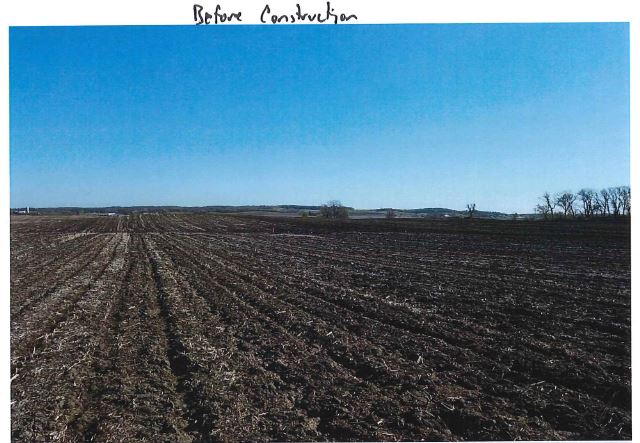|
The Clearwater River Watershed District (CRWD) completed Total Maximum Daily Load (TMDL) studies in 2009. As part of those studies, the Clearwater River Watershed District (CRWD) identified sources of bacteria, sediment and oxygen demand to the Clearwater River and corresponding lakes. Since 2009, work has been undertake by the CRWD and others to address these sources. However, by 2015 it became apparent both an update to the existing source inventory as well as an increased investment in best management practices (BMPs) adoption at the field-scale was needed.
As such, in 2015 the CRWD applied for and received a $72,000 grant from the Minnesota Pollution Control Agency via its Clean Water Partnership Program. This grant was funded via the Clean Water Land and Legacy Amendment. The projects goals were:
The project began in 2015 by identifying and implement agricultural BMPs and /or other projects to reduce sediment, phosphorus, and bacterial loads to the Upper Clearwater River. A desktop analysis identified high potential loading areas and BMPs throughout the upper portion of the Clearwater River Watershed. The BMPs were reviewed and sediment reduction was calculated based on the performance. Enrollment process began after the completion of the analysis. Several projects were implemented and one designed. These include Water & Sediment Control Basins (WASCOBs), an Animal Waste Treatment System (AWT) and a buffer strip along a non-public watercourse, non-public ditch. The implement projects were estimated to remove 434.18 lbs of phosphorus and 352.72 tons of total suspended solids on an annual basis. This project was completed due to the cooperation between the Clearwater River Watershed District, the Minnesota Pollution Control Agency, the Meeker and Stearns Soil & Water Conservation Districts and local property owners/ agricultural producers. Project Documents |
- About
-
Projects
- Carp Management 2023-2024
-
Clearwater River Chain of Lakes (1980) Restoration Project
>
- Annandale Wetland Treatment System
- Kingston Wetland Feasibility Study and Restoration Project
- Lake Augusta Aeration Project
- Lake Augusta Erosion Control Project
- 1980 Monitoring Program
- Non-Point Source Pollution Abatement (TCCP) Project
- Upper Lakes Aeration and Mechanical Fish Removal
- Watkins Wetland Isolation Project
- Watkins Wetland Treatment System
- Replacement Projects for Aerators
-
Total Maximum Daily Load (TMDL) Implementation Projects
>
- Alternative Tile Intake Project
- Clearwater River Channel Stabilization (CCM Riparian) Project
- Clearwater River Restoration & Protection Phase II Project
- City of Kimball Stormwater Treatment Phase II
- Targeted Fertilizer Application Reduction Project
- Watkins Area Stormwater Treatment Project
- Willow Creek (Kimball Phase I) Stormwater Retention / Reuse Project
- Potential Future Implementation Projects
- Bass Lake AIS Management
- Clear Lake North V-Notch Weir
- Clear Lake South Notch Weir
- Clear Lake IESF
- Cedar Albion Swartout Henshaw Project #06-1 >
- Clearwater Lake Milfoil Treatment
- CRWD Bog Control Projects
- Communal Sanitary Sewer Systems >
- Lake Augusta Aquatic Invasive Species (AIS) Project
- Lakes Louisa & Marie Aquatic Invasive Species (AIS) Project
- Norton Avenue Basin
- Ostmark Basin
- Pleasant Lake Outlet Control Structure
- Cedar Lake Aquatic Invasive Species (AIS) Project
- School Section Lake Outlet Control Structure
- Wastewater Treatment Task Force
- Programs
- Resource Library
- How You Can Help
- Contact
|
This page is maintained by CRWD Board Managers.
© Copyright 2020 |
Board Meetings
Third Wednesday of the month at 6pm Special and emergency meetings may be called. Such meetings will be properly notice per MN Statutes. |
Clearwater River Watershed District
93 Oak Avenue South, Suite 5 Annandale, MN 55302 Mailing Address:
3235 Fernbrook Ln N Minneapolis, MN 55447 |
Website created by Skol Marketing








